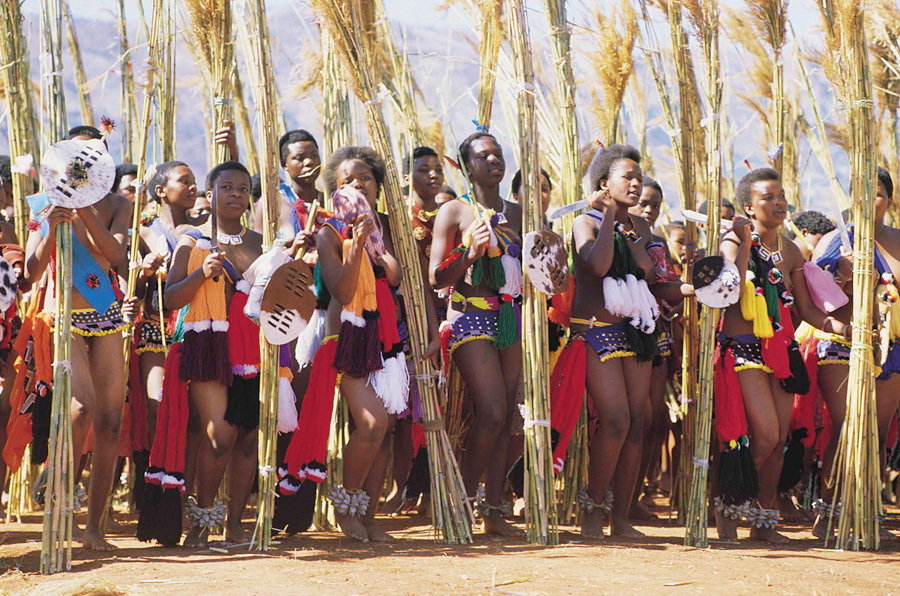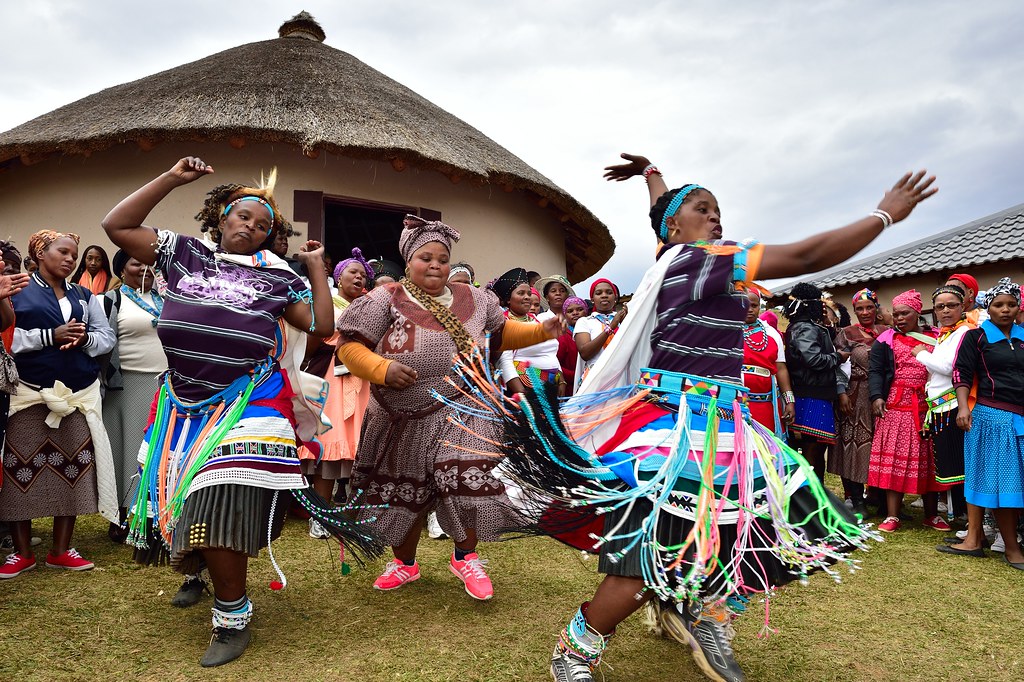The smart Trick of South African Culture Today That Nobody is Discussing
Table of ContentsOur South African Culture Today DiariesThings about South African Culture TodayRumored Buzz on South African Culture TodayFascination About South African Culture Today8 Simple Techniques For South African Culture TodayWhat Does South African Culture Today Mean?
This adheres to with singing and drum beating. The groom and bride then meet with the seniors and speak about the significance of their union. An issue of significance in Zambian towns is the passing away of loved ones. All participants of the town put cash, time and effort together for the interment of the deceased.Throughout the grieving duration; guys stay outside your home and the women remain inside your home of the deceased. After discussing the dead, the village strolls to the location of interment to claim their last farewells. Music and dancing is an extremely important aspect of the Zambian society. The different tribal systems have their very own dance kinds; nonetheless, makishi is typical among all tribes.
The smart Trick of South African Culture Today That Nobody is Discussing
When it pertains to songs, drums are made use of the most, with a range of drumming ceremonies. In Zambia, majority of the people are Christian; Protestant and Roman Catholic. There are little teams of Muslims and Hindus, with the rest complying with local indigenous tribal ideas.

South African heritage and culture is tremendously varied, and consists of many various teams of people that each have their very own practices and beliefs. Having such a diversity of people and cultures is what makes South Africa so one-of-a-kind. In real feeling of the phrase, we are a rainbow nation.
South Africa has around three hundred thousand Portuguese individuals residing in it. Making it the 7th on the listing of nations with one of the most Portuguese individuals in it outside of Portugal. Portuguese is not just a society, however it is additionally a language and a nationality. Portuguese individuals stem from the nation of Portugal in Europe, nonetheless, due to Portugal (like several other countries in Europe) exploring the world and dominating various other countries during the 15th 20th centuries, South Africa has what we call Portuguese South African's living in it.
The Best Guide To South African Culture Today
Amongst the popular attributes of the topography is a plateau that covers nearly two thirds of the center of the nation. The plateau complicated rises towards the southeast, where it climaxes in the Drakensberg array, component of an escarpment that separates the plateau from the seaside areas. The Drakensburg consists of Champagne Castle, the greatest peak in the nation.
The area north of the Witwatersrand, called the bushveld, inclines downward from eastern to west toward the Limpopo River, which creates the international border. The western section of the plateau, the middleveld, additionally descends in the direction of the west and varies in elevation between the highveld and bushveld. In between the Drakensburg and the eastern and southern coastline, the land descends to the sea.
Nearer the coastline there is a low-lying plain called the eastern lowveld. Southwest of the plateau the nation comes to be progressively more arid, giving means to the hostile desert of the Great Karroo, surrounded on the eastern by the lower, better watered plateau of the Little Karroo. Separating the dry southerly inside from the sandy littoral of the southern coast and West Cape is an additional array, the Langeberg.
The South African Culture Today PDFs
The nation's racially, ethnically, and politically split history has actually generated national and subnational icons that still function as symbols of the nation, and others signs that are accepted only by certain teams. The monoliths to white inhabitant conquest and political supremacy, such as the Afrikaner Voortrekker ("pioneer") Monument in Pretoria and the Rhodes Monument recognizing the British colonial realm builder and Cape prime priest Cecil Rhodes, remain sectarian symbols.
The first contemporary citizens were the San ("bushman") hunter-gatherers and the Khoi ("Hottentot") individuals, who rounded up animals Check This Out (South African culture today). The San might have been present for countless years and left evidence of their visibility in hundreds of ancient cavern paintings ("rock art"). Bantu-speaking clans that were the ancestors of the Nguni (today's amaZulu, amaXhosa, amaSwazi, and vaTsonga peoples) and Tswana-Sotho language groups (today's Batswana and Southern and Northern Basotho) migrated below east Africa as very early as the fifteenth century

Both former republics of the Orange Free State and Transvaal (South African Republic) were established by Afrikaner inhabitants that beat and dispossessed the Basotho and Batswana. Lesotho would certainly have been by force incorporated right into the Orange Free State without the expansion of British security in 1869. The ultimate unification of the country arised from the South African Battle (18991902) in between the British and both Afrikaner republics, which lowered the nation to wreck at the start of the twentieth century.
Afrikaners traditionally considered themselves the just true South Africans and, while giving complete citizenship to all locals of European descent, rejected that status to people of shade up until the autonomous change of 1994. British South Africans retain a feeling of cultural and social link to Great Britain without weakening their identification as South Africans.
The smart Trick of South African Culture Today That Nobody is Talking About
The variety and fragmentation within ethnic groupings and the balance of tensions in between those groups throughout the twentieth century avoided interethnic civil problem. While intergroup tensions over resources, entitlements, and political dominance continue to be, those problems are as most likely to pit Zulu against Zulu as Zulu versus Xhosa or African against Afrikaner.
From colonial India, British their explanation vendors and managers brought the bent steel decorative roofings and slim shoelace work columns that still symbolize the verandas of cottages in the areas and cities throughout the nation. Homes of worship contribute a vital architectural facet also in the tiniest communities. Along with the skyrocketing steeples and timeless stonework of Afrikaans Dutch Reformed churches, Anglican churches, synagogues, mosques, and Hindu temples give variety to the religious building scene.

Butchering and the brewing of typical grain beer are vital in securing the participation and a good reputation of the ancestors that are thought about link the guardians of good lot of money, prosperity, and well-being. Indian communities keep their indigenous culinary practices and apply them on Islamic and Hindu routine and ceremonial celebrations. Afrikaners and Coloured individuals gather at weekends and unique events at multifamily barbeques called braais, where community bonds are enhanced.
Since this was the main financial enterprise of both black Africans and white homesteaders, conflict in between those groups focused on the ownership of grazing land and livestock. In 1867, the biggest ruby down payments worldwide were discovered at Kimberley in the west main location. The wealth from those fields aided fund the exploitation of the greatest gold coral reef on the planet, which was found on the Witwatersrand in 1886.
The Only Guide for South African Culture Today
This brought about misconceptions and deliberate misstatement in the negotiations of white inhabitants and government officials with African principals during the early american period (South African culture today). In the facility of African books, some elements of communal and primarily "tribal trust fund" land tenure were maintained, and also in white country locations, forms of public tenure were still practiced in areas with African neighborhoods
After the democratic transformation of 1994, programs for land restitution, redistribution, and reform were instituted, but progress has been sluggish. The white minority still controls eighty percent of the land. Following agricultural land intrusions in Zimbabwe, the Department of Land Matters has vowed to speed up land redistribution.